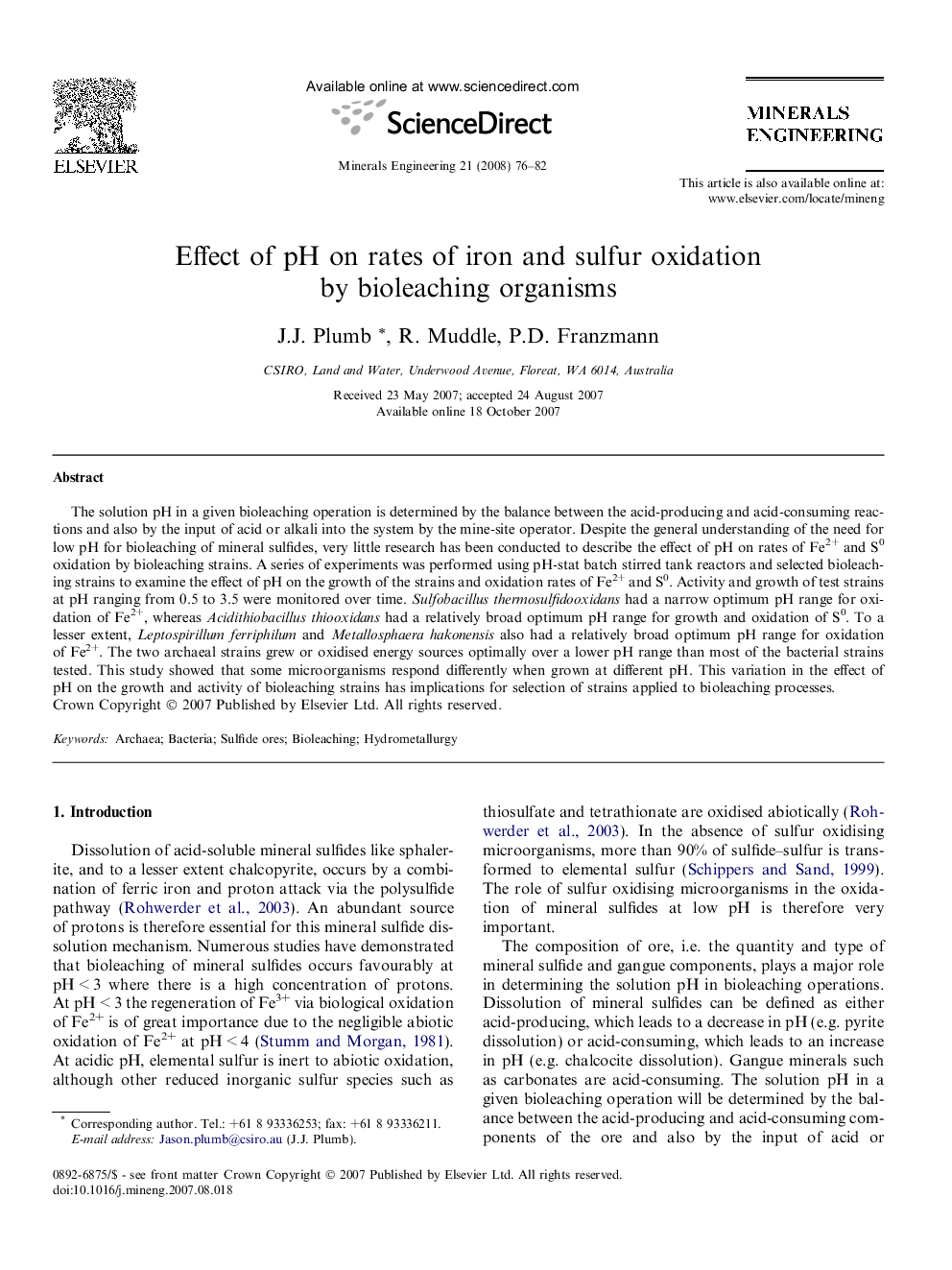| کد مقاله | کد نشریه | سال انتشار | مقاله انگلیسی | نسخه تمام متن |
|---|---|---|---|---|
| 234180 | 465391 | 2008 | 7 صفحه PDF | دانلود رایگان |

The solution pH in a given bioleaching operation is determined by the balance between the acid-producing and acid-consuming reactions and also by the input of acid or alkali into the system by the mine-site operator. Despite the general understanding of the need for low pH for bioleaching of mineral sulfides, very little research has been conducted to describe the effect of pH on rates of Fe2+ and S0 oxidation by bioleaching strains. A series of experiments was performed using pH-stat batch stirred tank reactors and selected bioleaching strains to examine the effect of pH on the growth of the strains and oxidation rates of Fe2+ and S0. Activity and growth of test strains at pH ranging from 0.5 to 3.5 were monitored over time. Sulfobacillus thermosulfidooxidans had a narrow optimum pH range for oxidation of Fe2+, whereas Acidithiobacillus thiooxidans had a relatively broad optimum pH range for growth and oxidation of S0. To a lesser extent, Leptospirillum ferriphilum and Metallosphaera hakonensis also had a relatively broad optimum pH range for oxidation of Fe2+. The two archaeal strains grew or oxidised energy sources optimally over a lower pH range than most of the bacterial strains tested. This study showed that some microorganisms respond differently when grown at different pH. This variation in the effect of pH on the growth and activity of bioleaching strains has implications for selection of strains applied to bioleaching processes.
Journal: Minerals Engineering - Volume 21, Issue 1, January 2008, Pages 76–82